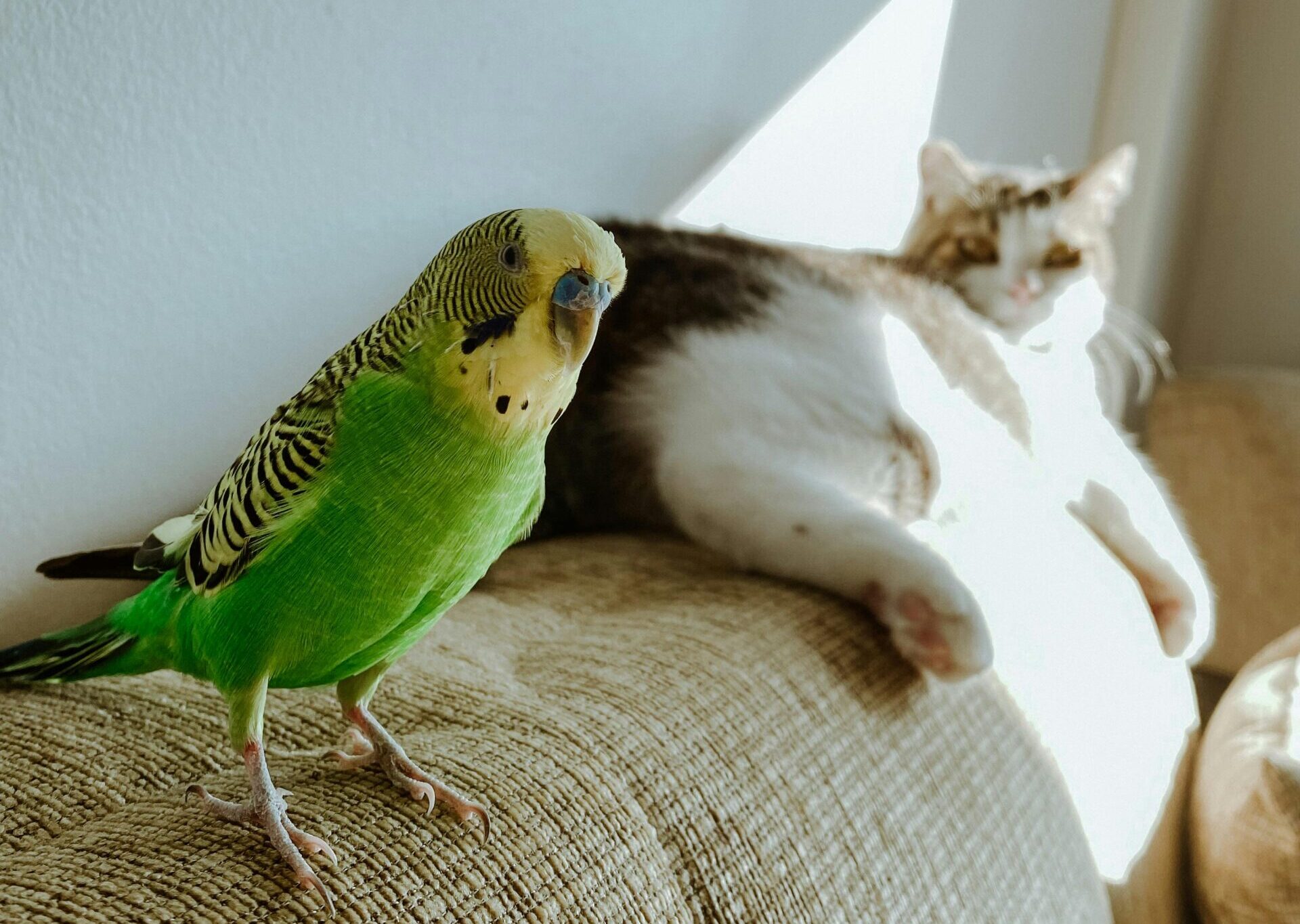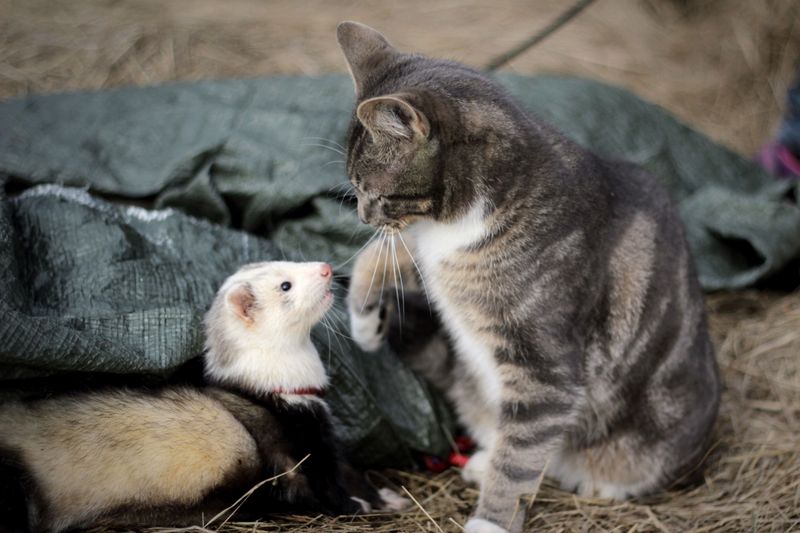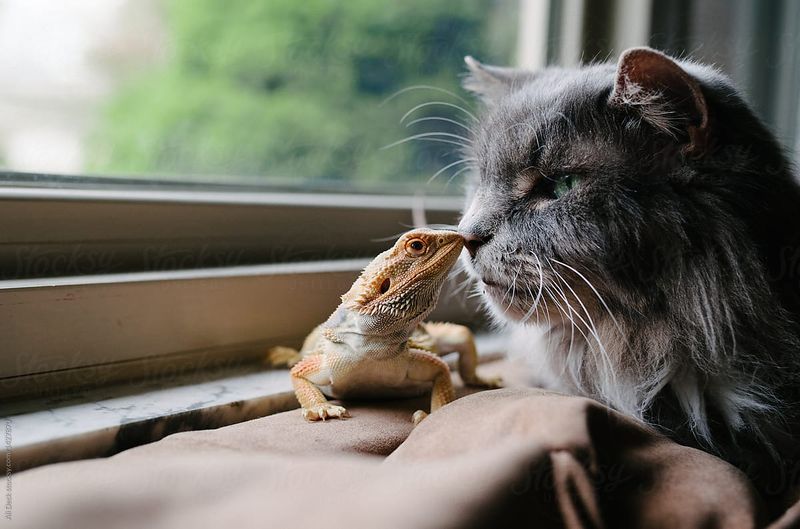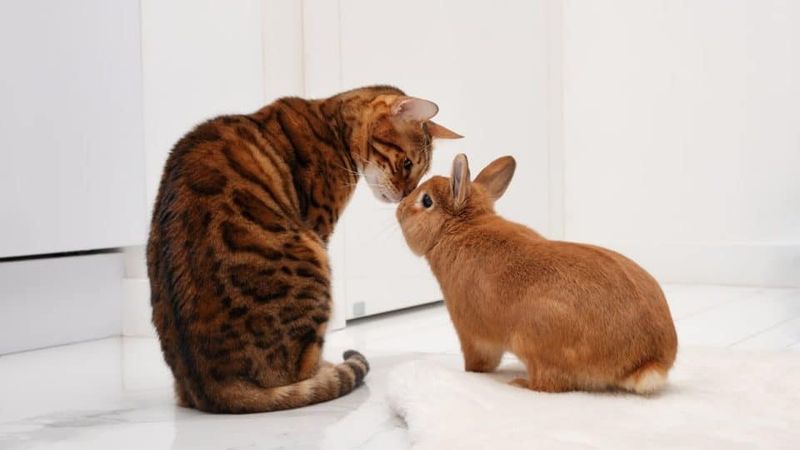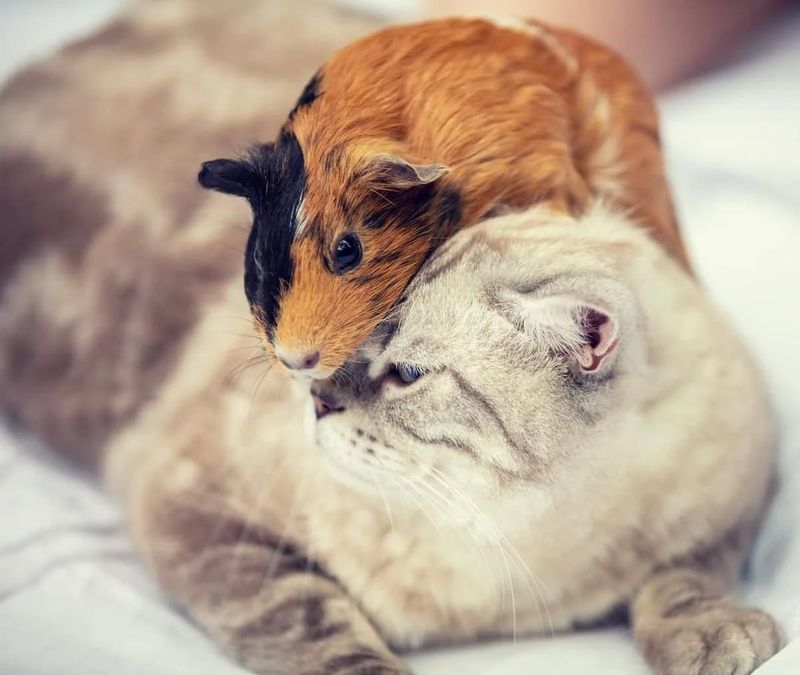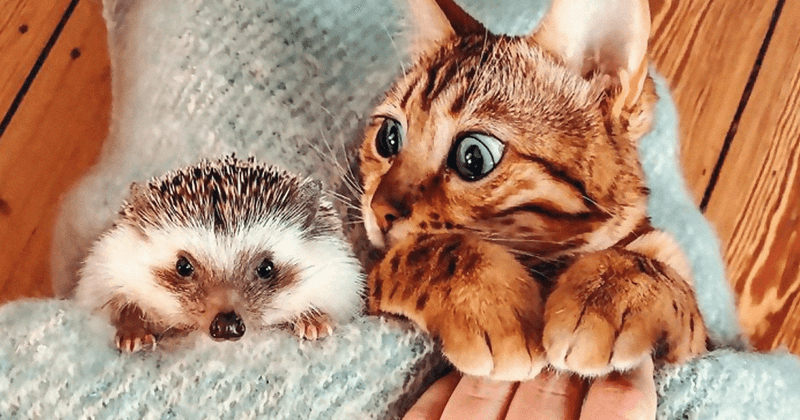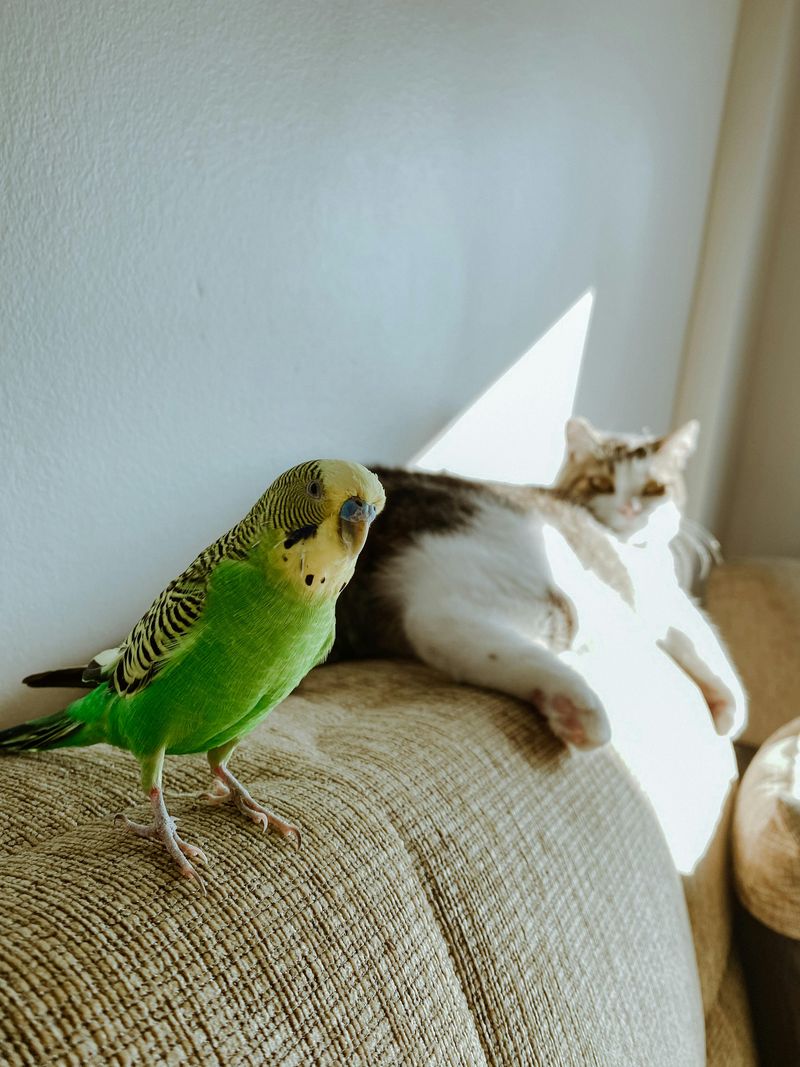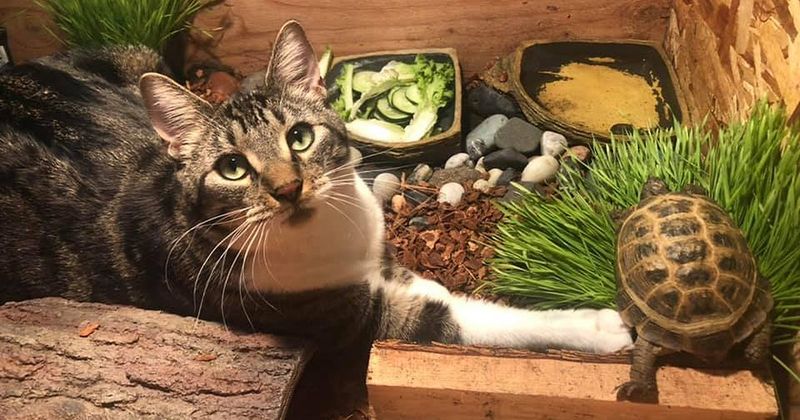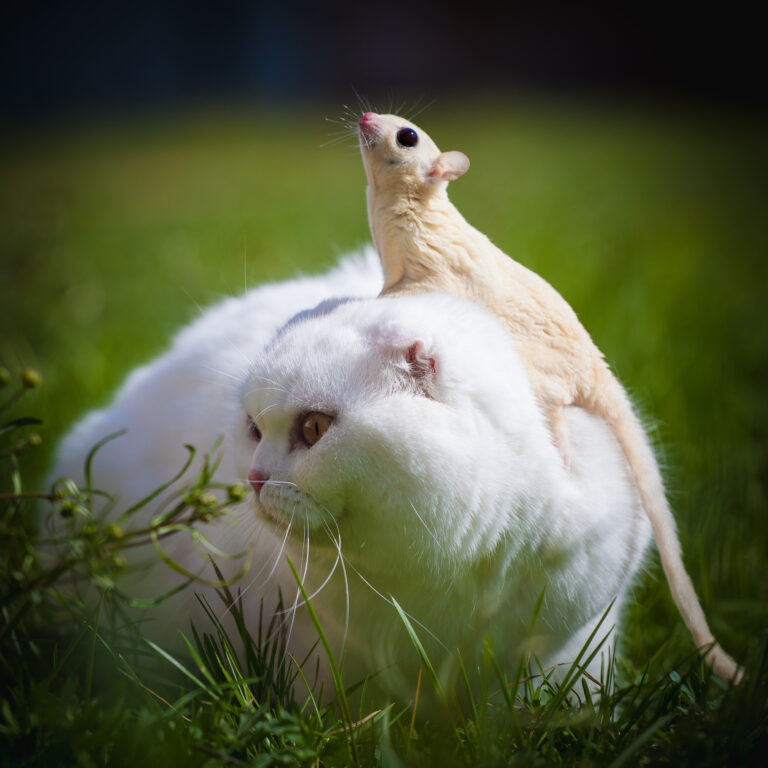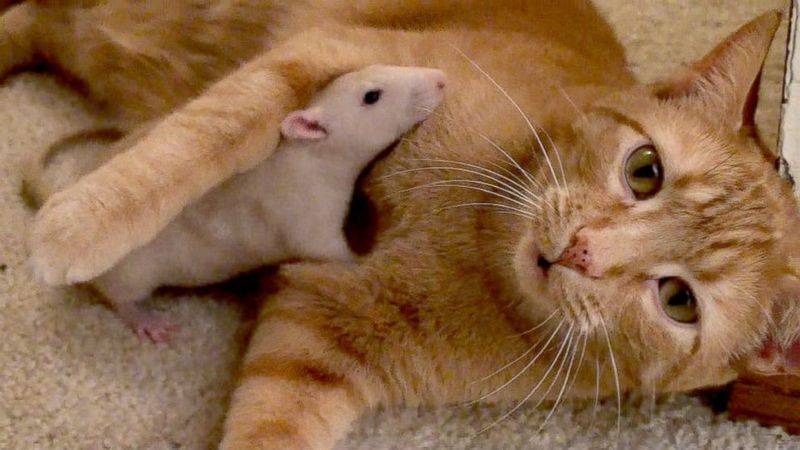📖 Table of Content:
Living with a cat doesn’t have to limit your options for welcoming other animals into your home. While felines are known for their territorial and sometimes predatory instincts, many cat owners are surprised to discover that their pets can coexist—and even form friendships—with a variety of exotic animals. The key lies in careful selection, proper introductions, and respecting the unique needs of each species.
In recent years, more pet lovers have begun to explore beyond the traditional dog-and-cat dynamic. From reptiles to rodents and feathered companions, these animals can offer enrichment and companionship to both you and your cat, provided that their pairing is thoughtful and managed. It’s not about forcing friendships but rather about creating a peaceful environment where different species can coexist safely.
This article explores nine surprisingly peaceful pairings where cats and exotic pets have successfully shared homes. Each example includes insights into why the match can work, the temperament required, and how to maintain harmony. With patience and attentiveness, you might find that your cat’s next friend comes with scales, feathers, or even quills.
1. Cat & Ferret
Starting off with high-energy mischief-makers, ferrets and cats often mirror each other in their curious and playful temperaments. When introduced gradually, these two can enjoy rambunctious play sessions that look more like a comedy sketch than a scuffle. Ferrets, with their slinky bodies and bold personalities, often appeal to the feline’s sense of chase and engagement. However, it’s important to note that not all cats appreciate the ferret’s persistent enthusiasm. Careful supervision during early interactions helps set boundaries for both animals. Providing escape options for the cat, like elevated shelves or hideaways, can reduce stress. Ultimately, their bond depends on a balance of tolerance, stimulation, and personal space.
2. Cat & Bearded Dragon
Despite being from entirely different branches of the animal kingdom, cats and bearded dragons have been known to share spaces without conflict. A bearded dragon’s calm and slow demeanor often dampens the cat’s hunting instinct, leading to passive curiosity instead of aggression. Unlike smaller reptiles, bearded dragons have little scent and movement that might otherwise attract unwanted feline attention. Cats may watch them bask or move within their tank, but usually lose interest once the novelty fades. Housing the dragon in a secure enclosure is still critical to prevent accidental injury. Occasional supervised encounters can enrich both animals’ environments in a controlled way. These interactions should never be forced but observed with patience and care.
3. Cat & Rabbit
Across many households, rabbits have earned a spot beside cats as surprisingly compatible companions. Confident rabbits with strong personalities can hold their own, especially when they don’t exhibit fearful or frantic behavior. Cats may initially stalk or sniff out the rabbit, but most lose interest once they realize it won’t run away. When raised together, some even develop a social bond that includes grooming and sleeping near each other. It’s essential to allow the rabbit to initiate most interactions and to have hiding spots available. Avoid pairing a skittish rabbit with a dominant or hyperactive cat, as the stress can be detrimental. With patience, this pairing can become not just peaceful, but truly heartwarming.
4. Cat & Guinea Pig
Introducing cats to guinea pigs demands extra caution, but in the right setting, calm coexistence is achievable. Guinea pigs are naturally timid and vulnerable, and their size and sounds may trigger predatory instincts in some cats. The safest arrangement involves keeping the guinea pig in a secure, enclosed habitat when the cat is nearby. Visual exposure without physical contact is a good starting point to reduce curiosity and over-excitement. Some cats may sit quietly near the guinea pig’s enclosure, showing little more than mild interest. While full interaction is rarely advisable, a stable routine can desensitize both animals to each other’s presence. This pairing works best in peaceful households where stress is minimized.
5. Cat & Hedgehog
Curiosity might draw a cat toward a hedgehog, but one prickly encounter usually teaches the feline to observe from a respectful distance. Hedgehogs, with their defensive quills and low activity levels, are often left undisturbed by even the most inquisitive cat. These animals rarely provoke or startle, making them less likely to be perceived as prey. A cat might sniff or paw at a hedgehog initially, but sharp quills quickly end the experiment. The key is maintaining a secure enclosure and supervising any exploration outside of it. Hedgehogs should never be handled like toys or placed in the cat’s path deliberately. This hands-off pairing can result in a peaceful yet distant mutual tolerance.
6. Cat & Parrot
Feathers and fur can mix in surprising harmony when the right bird and cat are matched thoughtfully. Larger birds like parrots often have bold personalities that can rival or even intimidate a cat. Many birds are vocal and expressive, which can disrupt a cat’s stealth and discourage pursuit. Cage security is paramount, especially when the bird is unsupervised. Cats should never have free access to a bird outside of its enclosure, regardless of perceived friendliness. With firm barriers and occasional monitored encounters, these animals can become comfortable with each other’s presence. Always err on the side of caution to protect the bird from potentially fatal scratches or bites.
7. Cat & Tortoise
Few animals move as deliberately as a tortoise, which might explain the indifferent reaction most cats display upon meeting one. Their slow, steady movements don’t typically excite a cat’s prey instincts, making them one of the safest reptiles to pair. Tortoises are mostly terrestrial and quiet, often prompting cats to simply walk away after a cursory sniff. Enclosure size and safety remain important, as curious cats might attempt to climb or investigate. While they’re unlikely to harm each other, supervision ensures that no unwanted behavior develops. Letting both roam in a shared space occasionally can offer novel stimulation. However, minimal interaction is the usual norm for this pairing.
8. Cat & Sugar Glider
Among the more unusual matches, sugar gliders and cats can share a home when extreme care is taken. These tiny marsupials are fast and fragile, making them vulnerable to a cat’s quick reflexes. Sugar gliders thrive in enclosures and typically come out only during supervised activity. Cats may show high interest at first due to the glider’s movement and scent. To protect the glider, interactions should be visual only unless the cat is exceptionally gentle and trustworthy. Over time, the cat may lose interest if the sugar glider is never accessible. This pairing demands constant vigilance but can work in carefully controlled environments.
9. Cat & Rat
Of all rodent-cat combinations, rats may seem the least likely, yet many pet rats have befriended feline housemates. Rats are intelligent and sociable, sometimes able to recognize and respond calmly to the presence of a cat. Some cats, especially those raised around rats or trained early, can view them as companions rather than prey. Initial contact should be controlled, with physical barriers and slow introductions. Observing their behavior closely can help determine if trust is possible. This unique friendship is not for every cat or rat, but with the right personalities, it can blossom into something remarkably sweet. Always prioritize the rat’s safety and provide safe retreats and handling practices.
